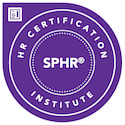As of this month, many businesses that have been closed or operating remotely during our Shelter-in-Place order are now able to reopen. If you are able to reopen, are you ready?
Public health guidelines call for continued social distancing, facemasks, and enhanced sanitation procedures in order to open while maintaining the health of staff and customers. This requires a considerable amount of planning on the part of the business owner and new processes and procedures for employees.
The most frequent request I’m getting from leaders and business owners these days who call about my Just in Time 3-Hour HR Advisory Service is for help in creating a COVID-19 compliant reopening plan.
A recent Forbes article included a checklist of “the 5 most important things businesses must be able to do in order to return to work.”
- Track and comply with evolving government and healthcare protocols.
- Help keep employees safe.
- Analyze the threat of new outbreaks.
- Maintain the integrity of their supply chain.
- Audit their processes to maintain compliance.
Each of these items requires planning as well as knowledge of where to find the most recent credible information about requirements and protocols. And that’s where advice from a Senior HR Consultant can be very helpful.
If you will be continuing to have some or all of your employees work remotely, it’s also important to strategize how to do that on a more permanent basis. Having employees work remotely for a few months is one thing, but when it becomes your standard business model there are many other things to consider. What additional equipment will employees need? How will you maintain team cohesiveness and workflow? How do you help remote employees maintain a balance between work-at-home and home-at-home so they don’t burn out?
It’s also important to think about how you will handle specific employee issues that may come up in light of the pandemic. Some questions clients have asked me are:
- What if an employee is afraid of returning to work in case they’re exposed to the virus and then expose a vulnerable family member? How do we convince them that it’s safe?
- How do we keep employees engaged when they’re working remotely?
- What if we have another shutdown?
If you have questions or need help putting together your business reopening plan, contact me today to schedule a free 30-minute consultation to see how Just in Time 3-Hour HR Consulting Service can help you.
https://calendly.com/michellemendoza-connecttohr/30-minute-consultation
If you know of a business owner who may need advice about reopening or any other HR issue, please share our Just in Time 3-Hour HR Advisory Service flyer with them. Thank you!





 It’s hard to believe that the holidays are here already, and that 2018 is just around the corner! I hope that you will have a warm and wonderful holiday season with family and friends, and that the New Year will bring you happiness and success.
It’s hard to believe that the holidays are here already, and that 2018 is just around the corner! I hope that you will have a warm and wonderful holiday season with family and friends, and that the New Year will bring you happiness and success. The holidays and the new year are fast approaching. Before your attention turns entirely to holiday cards and gift lists, remember to set aside some time to ensure you have reviewed and completed any HR items that need to be completed before year end. I’ve included a list of those items below.
The holidays and the new year are fast approaching. Before your attention turns entirely to holiday cards and gift lists, remember to set aside some time to ensure you have reviewed and completed any HR items that need to be completed before year end. I’ve included a list of those items below.
 A clearly defined, communicated and continually reinforced company culture improves productivity, promotes ethical behavior, and contributes to business success. Employees are more likely to be engaged and loyal when they work in an environment of strong ethics, mutual respect, and trust.
A clearly defined, communicated and continually reinforced company culture improves productivity, promotes ethical behavior, and contributes to business success. Employees are more likely to be engaged and loyal when they work in an environment of strong ethics, mutual respect, and trust.
 In most organizations, managers and employees start the year – or review period – by documenting goals and objectives. Unfortunately, however, those goals and objectives often get tucked away in a file somewhere not to be seen again until they magically reappear at the annual performance review. By then circumstances may have changed, or it may be too late to catch up on a goal gone astray.
In most organizations, managers and employees start the year – or review period – by documenting goals and objectives. Unfortunately, however, those goals and objectives often get tucked away in a file somewhere not to be seen again until they magically reappear at the annual performance review. By then circumstances may have changed, or it may be too late to catch up on a goal gone astray.
